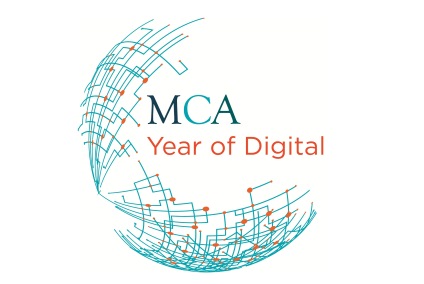Coordinating the MCA’s Year of Digital has been a real privilege. The Year has provided great insight into how the consulting industry is at the heart of the UK economy’s Digital transformation. MCA firms have been utterly convincing about Digital’s benefits.
Yet occasionally, perhaps inevitably, discussions assumed an abstract character. Digital’s value can seem virtual, intangible, even elusive. At those moments, I have craved ways to link Digital with economic and growth factors of an inalienably physical and visible character.
So it was an especial pleasure to chair the concluding event of the Year of Digital: Digital, Infrastructure, Consulting: A Recipe for Innovation and Growth. This session, which also anticipated our Year of Growth, examined how design and operation of infrastructure could be made more efficient and personalised using technology and data. This terrain couldn’t be more innovative – or more concrete. Digitised infrastructure splices together the legacies of British pioneers Tim Berners Lee and Isambard Kingdom Brunel. It concerns the Internet of Very Big Things.
Attended by over 70 delegates, a mix of consultants and client organisations operating throughout the Digital and infrastructure value chains, the session was graciously hosted at the Royal Academy of Engineering, and sponsored by our co-host Atkins, an MCA member firm, active in the advisory, infrastructure and Digital arenas. Atkins’ Geoff Kneen, Managing Director, Aerospace, Defence, Security & Technology, and MCA Board member, was joined on the panel by David Tanner, Services Director, Digital Infrastructure Practice, at Mott MacDonald, and David Parkin, Director of Network Strategy, National Grid.
Geoff Kneen suggested that deploying Digital visualisation tools would increase the efficiency and responsiveness of transport infrastructures. Performance data can be captured and analysed to help improve safety throughout assets’ entire lifecycles. Real-time Digital information can also be deployed to allow customers to search transport options and commission personally tailored services. Geoff also touched on the immense disruptive and innovative potential of Digital, noting the construction of a 30-storey building in China in 15 days using 3D print technology, and remarking on the possibility that drone technologies might make pilots, especially in military aviation, redundant. Geoff mentioned how US SMEs are hiring Unmanned Aerial Vehicles (UAVs) to fly across major cities to undertake mapping exercises. Amazon claim to be close to the launch of a drone-based delivery service in the US.
David Tanner considered Digital a key enabler in asset design and build, promoting effectiveness and efficiency. However, he suggested that the interaction of new technologies and infrastructure was at once complex and in its infancy. Existing workplace assumptions often needed to be challenged. Putting Wi-Fi in a nuclear power station, for example, is countercultural. Advisory practices must anticipate developments in how Digital will align and interact with infrastructure, and understand commercial models and incentives. Further, Digital generates massive data sets. David suggested that analysing these for genuinely relevant insights is an emerging and specialised discipline.
David Parkin agreed that Digital’s potential safety benefits mattered in his sector. Digitally mapping the gas transmission system promotes safety and helps enhance performance, margins and profitability. He mentioned the company Calm Solutions’ approach to asset management. They create a Facebook page for individual assets, providing functionality to search for and track products using an interface people recognise from other parts of their lives. He also agreed that data needs to be relevant to a business – and so do new technologies. These should be rooted in core infrastructure understanding, not randomly developed bolt-ons.
The discussion then turned to the problems of marrying Digital pace with the long-term nature of infrastructure projects. David Tanner agreed that this was challenging, but made easier by the fact that underlying hardware systems were becoming increasingly adaptive to the evolution of applications. Infrastructure, he argued, needed to become technology agnostic. Geoff Kneen suggested that any new Digital frontends should be subject to suitable failure analysis. He also observed that Digital could allow infrastructure assets to be reapplied to new purposes. Buildings, networks, systems and indeed organisations, should be viewed as platforms, and Digital exploited to diversify their use.
David Parkin reframed the ‘tempo’ challenge. He noted that the longevity of various assets permits them to be digitised, since they were unlikely to go out of use soon. Digital capabilities by contrast are rapidly obsolete. So the onus of adaptation was on Digital, not infrastructural, systems.
Audience members commented that effective infrastructure requires human features and skills, such as the slack and reactive capacity of redundancy, to cope with failures. They also noted that there should be a clear focus on the outcomes expected from combining infrastructure and technology. This would help avoid investment in rapidly obsolescent capabilities and approaches. It might also prevent Digital projects generating unforeseen, unplanned or unanticipated costs in process redesign to cope with their introduction. Other audience members challenged the notion that futureproofing based on professional and industry ‘business as usual’ judgements was even possible, given the pace of change, exemplified by the speed with which Uber had disrupted assumptions around transport.
Geoff Kneen argued that data can expedite the delivery and improve the operability of new constructions. He cited the introduction of a diagonal crossing at Oxford Circus. Digital could be used to shorten the planning cycle of such projects, through predictive models which allow one to observe how the signal, pedestrian and traffic flow patterns work in practice. It can also be used to improve the efficiency of existing spaces and assets. The European Railway Traffic Management System (ERTMS) is a high-profile example of a technological innovation that could increase efficiency of an existing network, potentially by up to 30%.
David Tanner introduced the issue of service personalisation. Data disclosure is often a condition of personalisation. So conflicts between service-tailoring on the one hand and privacy and security on the other might arise. Audience members observed that attitudes here have a generational dimension, with younger people more relaxed about higher levels of self-disclosure (a refrain which has been a prominent feature of the Year of Digital). David Parkin noted that personalisation was most prominent in his world in SMART metering. Evidence suggests that when consumers have access to data about their energy usage, they will reduce it. This can have a beneficial impact on the management of infrastructure, by reducing the need for new energy generation capacity.
Panellists agreed that a major challenge for Digital and infrastructure is skills. Both technological and construction skills are scarce. Even more scarce are individuals who combine both skill sets. Panellists suggested that new capabilities fusing Digital and infrastructure would evolve in coming years. Meanwhile, consulting teams have a vital role in bringing together the different combinations needed to make projects work, ensuring that infrastructures benefit from Digital insights. While all panellists agreed that core infrastructure skills would always be important, architects, engineers and asset operators needed to be open-minded. More comprehensive and better analysed data sets could allow them to understand even the fundamentals of their business better. This openness needs to extend to selecting Digital partners.
Finally, the panel turned to growth. Consumers are empowered by Digital. But does that make Digital a driver of growth per se? For every job lost through Digital, 1.7 are created. Uber models and the deployment of assets as multi-functional platforms could create saleable value. Better experiences provided for consumers by infrastructure companies should drive usage, enhance brand image and increase profitability. However, some issues need to be worked through. The skills profiles of new jobs, some more specialised, others more generalist, will create patterns of employment which are not yet necessarily understood. Further, in energy usage, the tension between carbon reduction – an area of regulatory interest where Digital can be of significant use – and business profitability is not an easy one to resolve.
Overall, though, the panellists took the macro view: Digital would permit the more effective management of existing assets and more efficient construction and operation of new ones. This could only be good for economic wellbeing and growth.
As well as asking direct questions, the audience were engaged throughout the debate through the use of sli.do, an online participation resource. We also used it to conduct audience polls on a number of issues. Asked which was more important for growth, transport or Broadband infrastructure, 56% supported transport infrastructure, 44% Broadband. 66% suggested that Digital was more useful when combined with existing assets compared with 34% who saw its primary value in new build. And while 60% of the audience did not anticipate driverless cars on the road by 2020, 40% did.
This fascinating discussion provided a suitable climax to the Year of Digital. We will return to the topic repeatedly throughout the Year of Growth.


